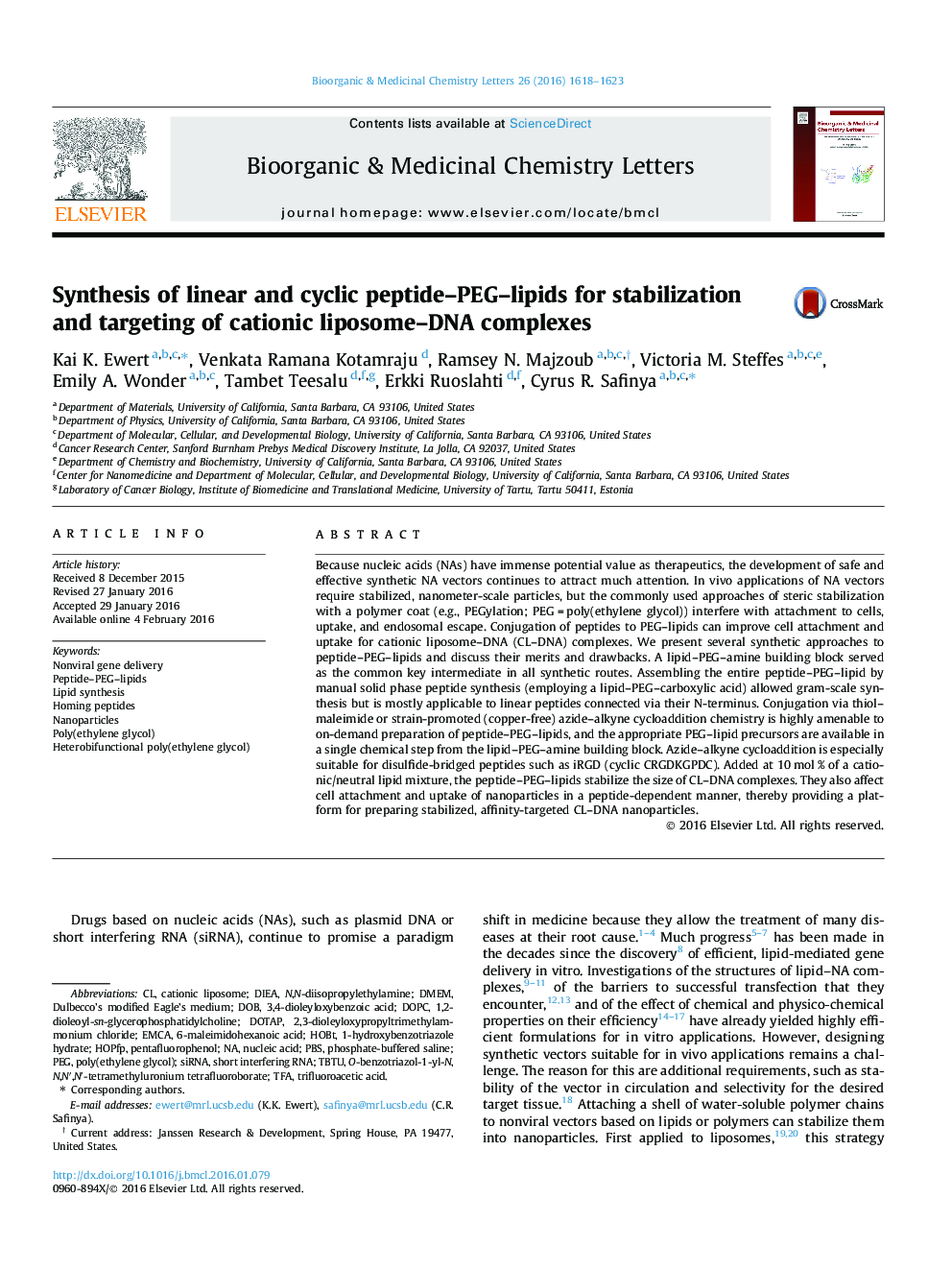| Article ID | Journal | Published Year | Pages | File Type |
|---|---|---|---|---|
| 1368740 | Bioorganic & Medicinal Chemistry Letters | 2016 | 6 Pages |
Because nucleic acids (NAs) have immense potential value as therapeutics, the development of safe and effective synthetic NA vectors continues to attract much attention. In vivo applications of NA vectors require stabilized, nanometer-scale particles, but the commonly used approaches of steric stabilization with a polymer coat (e.g., PEGylation; PEG = poly(ethylene glycol)) interfere with attachment to cells, uptake, and endosomal escape. Conjugation of peptides to PEG–lipids can improve cell attachment and uptake for cationic liposome–DNA (CL–DNA) complexes. We present several synthetic approaches to peptide–PEG–lipids and discuss their merits and drawbacks. A lipid–PEG–amine building block served as the common key intermediate in all synthetic routes. Assembling the entire peptide–PEG–lipid by manual solid phase peptide synthesis (employing a lipid–PEG–carboxylic acid) allowed gram-scale synthesis but is mostly applicable to linear peptides connected via their N-terminus. Conjugation via thiol–maleimide or strain-promoted (copper-free) azide–alkyne cycloaddition chemistry is highly amenable to on-demand preparation of peptide–PEG–lipids, and the appropriate PEG–lipid precursors are available in a single chemical step from the lipid–PEG–amine building block. Azide–alkyne cycloaddition is especially suitable for disulfide-bridged peptides such as iRGD (cyclic CRGDKGPDC). Added at 10 mol % of a cationic/neutral lipid mixture, the peptide–PEG–lipids stabilize the size of CL–DNA complexes. They also affect cell attachment and uptake of nanoparticles in a peptide-dependent manner, thereby providing a platform for preparing stabilized, affinity-targeted CL–DNA nanoparticles.
Graphical abstractFigure optionsDownload full-size imageDownload as PowerPoint slide
